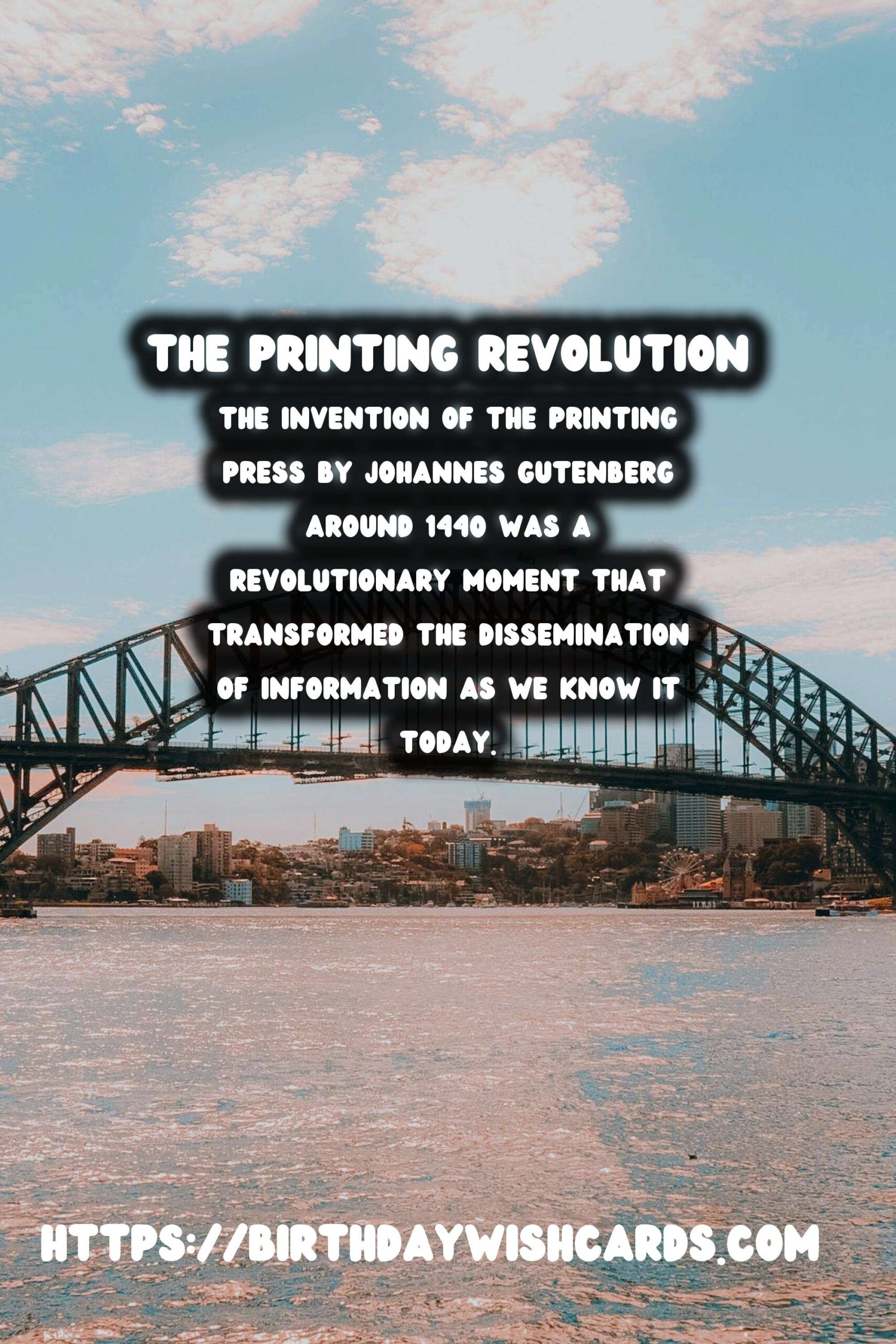
The invention of the printing press by Johannes Gutenberg around 1440 was a revolutionary moment that transformed the dissemination of information as we know it today. Gutenberg’s movable type printing press replaced the labor-intensive process of hand-copying texts, thus making books more accessible and affordable for the masses.Before the advent of the printing press, literacy was a privilege enjoyed by the elite. The expensive hand-made books were confined to limited circles, often locked away in monasteries and affluent households. This restriction meant that the spread of knowledge was considerably slow. However, with the introduction of printing, the pages of literature, scientific acumen, and philosophical thought burst wide open, laying the foundations for the modern era of information sharing.
Early Days of Printing
In the early days of printing, two main methods were employed: block printing and movable type. Block printing, where texts and illustrations were carved into wood, was laborious and could not accommodate large-scale production. Movable type revolutionized this; it enabled printers to rearrange characters with ease, producing books faster and over greater runs.Gutenberg’s innovative approach led to the mass production of books like never before. This transformation not only democratized education but also sparked a newfound thirst for knowledge, paving the way for the Renaissance and the Enlightenment.
The Spread of Literacy Across Europe
The spread of printing presses throughout Europe was rapid. By 1500, over 250 printing presses were established, leading to the production of more than 20 million volumes. These numbers denote a significant shift in society — for the first time, written works were available to a much broader audience. This facilitated the establishment of schools and universities, as educational materials became plentiful.Literacy rates began to rise substantially during the Renaissance, thanks largely to texts printed in vernacular languages as opposed to Latin. The accessibility of reading materials allowed people from different backgrounds to educate themselves, thus promoting a more informed citizenry.
Printing’s Role in Subsequent Literacy Movements
As the years progressed, the role of printing in promoting literacy became even more pronounced. The Protestant Reformation, which called for religious texts to be available in the vernacular, relied heavily on the printing press to disseminate its ideas. The Bible, previously confined to Latin, was suddenly accessible to ordinary individuals, further encouraging literacy and personal interpretation.Similarly, the Enlightenment was a period characterized by a literary boom, with printed works covering science, philosophy, and social issues. This era witnessed a further push towards universal education, emphasizing the importance of literacy as a tool for empowerment.
Modern Implications of Printing on Literacy
Today, printing continues to be a vital component of literacy, although the medium has transformed with digital advancements. E-books and online articles carry forth the tradition of print by granting even wider access to information. The knowledge-sharing process instigated by Gutenberg impacts contemporary society, where literacy is no longer a privilege but a fundamental right.The history of printing is a testament to how technological advances can reshape societal structures, making knowledge more accessible and engaging. It reminds us of the importance of continuing to advocate for literacy amongst all age groups in the digital age.
Conclusion
In conclusion, the history of printing has been nothing short of revolutionary in its impact on literacy. From its inception in the 15th century to the digital revolutions of today, printing remains a central theme in the narrative of education and knowledge dissemination. As we look to the future, understanding this past inspires us to persistently strive towards an educated and enlightened global community.
The invention of the printing press by Johannes Gutenberg around 1440 was a revolutionary moment that transformed the dissemination of information as we know it today. Today, printing continues to be a vital component of literacy, although the medium has transformed with digital advancements.
#HistoryOfPrinting #LiteracyImpact

